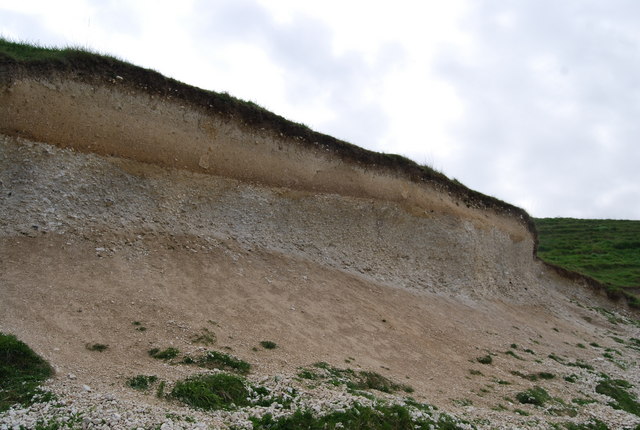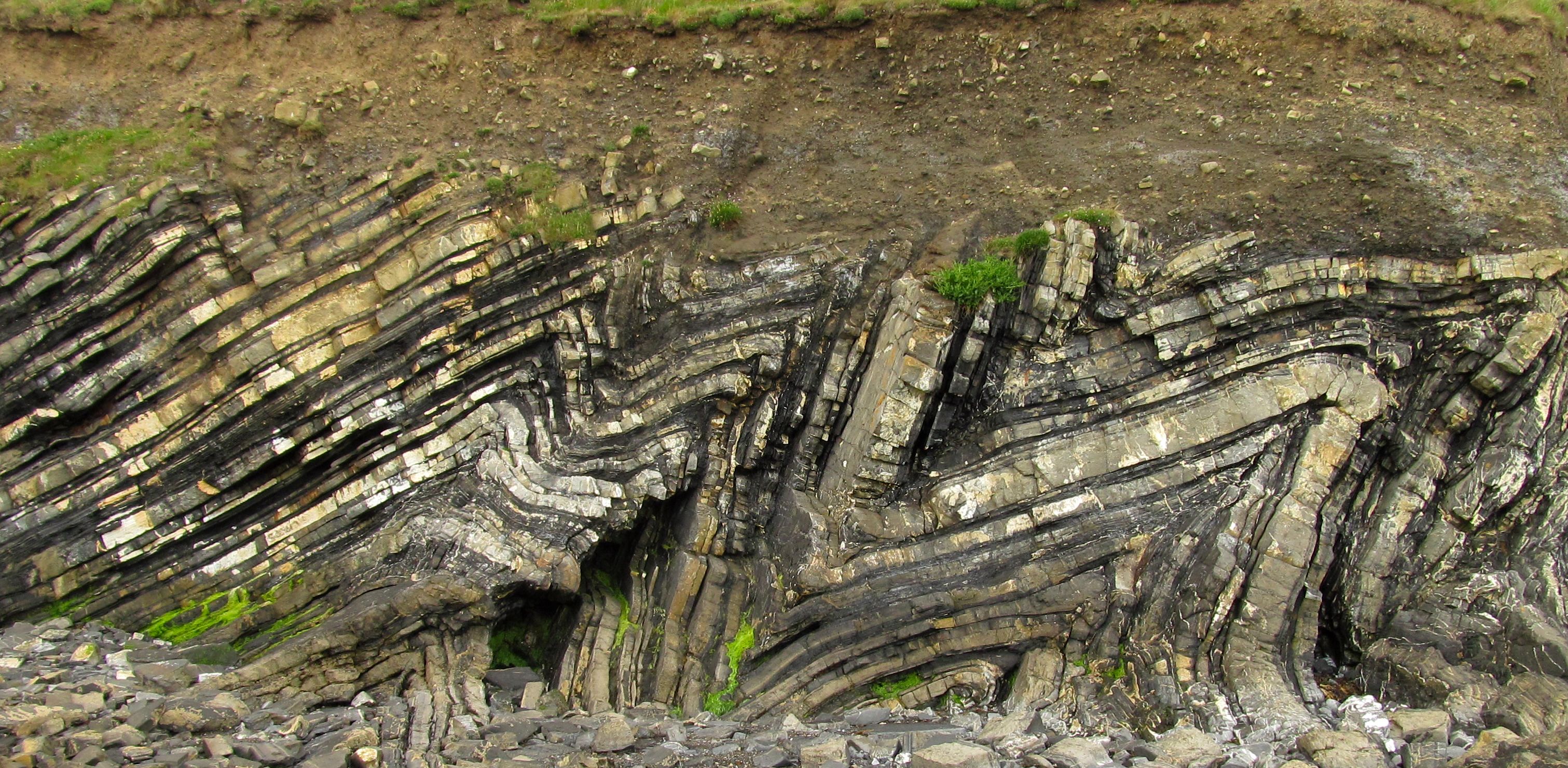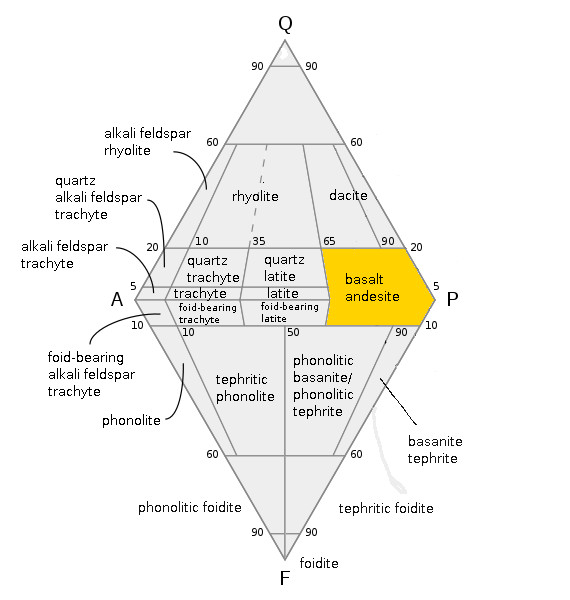|
Midland Formation
The Midland Formation is a Mesozoic (latest Triassic to earliest Jurassic) geological formation A geological formation, or simply formation, is a body of rock having a consistent set of physical characteristics (lithology) that distinguishes it from adjacent bodies of rock, and which occupies a particular position in the layers of rock expo ... in the Culpeper Basin of Virginia. It is a Sedimentary rock, sedimentary unit which formed in a short period of time between the first two basalt flows in the basin: the Hickory Grove Basalt, Hickory Grove and Mount Zion Church Basalt, Mount Zion Church basalts. The most common rocks in the formation are dark reddish Interbedding, interbedded Sandstone, sandstones and Siltstone, siltstones, representative of fluvial (stream) environments. Rare but fossiliferous calcareous shale and limestone also occurs, representing recurring lacustrine (lake) conditions. The Midland Formation is considered equivalent to the Shuttle Meadow Formation of th ... [...More Info...] [...Related Items...] OR: [Wikipedia] [Google] [Baidu] |
Geological Formation
A geological formation, or simply formation, is a body of rock having a consistent set of physical characteristics (lithology) that distinguishes it from adjacent bodies of rock, and which occupies a particular position in the layers of rock exposed in a geographical region (the stratigraphic column). It is the fundamental unit of lithostratigraphy, the study of strata or rock layers. A formation must be large enough that it can be mapped at the surface or traced in the subsurface. Formations are otherwise not defined by the thickness (geology), thickness of their rock strata, which can vary widely. They are usually, but not universally, tabular in form. They may consist of a single lithology (rock type), or of alternating beds of two or more lithologies, or even a heterogeneous mixture of lithologies, so long as this distinguishes them from adjacent bodies of rock. The concept of a geologic formation goes back to the beginnings of modern scientific geology. The term was used by ... [...More Info...] [...Related Items...] OR: [Wikipedia] [Google] [Baidu] |
Triassic
The Triassic ( ) is a geologic period and system which spans 50.6 million years from the end of the Permian Period 251.902 million years ago (Mya), to the beginning of the Jurassic Period 201.36 Mya. The Triassic is the first and shortest period of the Mesozoic Era. Both the start and end of the period are marked by major extinction events. The Triassic Period is subdivided into three epochs: Early Triassic, Middle Triassic and Late Triassic. The Triassic began in the wake of the Permian–Triassic extinction event, which left the Earth's biosphere impoverished; it was well into the middle of the Triassic before life recovered its former diversity. Three categories of organisms can be distinguished in the Triassic record: survivors from the extinction event, new groups that flourished briefly, and other new groups that went on to dominate the Mesozoic Era. Reptiles, especially archosaurs, were the chief terrestrial vertebrates during this time. A specialized subgroup of arch ... [...More Info...] [...Related Items...] OR: [Wikipedia] [Google] [Baidu] |
Bendersville Formation
Bendersville is a borough in Adams County, Pennsylvania, United States. The population was 736 at the 2020 census.https://data.census.gov/all?q=Bendersville+borough,+Pennsylvania Geography Bendersville is located at (39.982466, -77.249608). According to the U.S. Census Bureau, the borough has a total area of , all land. Demographics As of the census of 2000, there were 576 people, 202 households, and 156 families residing in the borough. The population density was . There were 222 housing units at an average density of . The racial makeup of the borough was 90.62% White, 2.26% African American, 0.17% Native American, 0.17% Asian, 5.90% from other races, and 0.87% from two or more races. Hispanic or Latino of any race were 12.67% of the population. There were 202 households, out of which 38.6% had children under the age of 18 living with them, 64.9% were married couples living together, 9.4% had a female householder with no husband present, and 22.3% were non-families. 17.3% ... [...More Info...] [...Related Items...] OR: [Wikipedia] [Google] [Baidu] |
Newark Basin
The Newark Basin is a sediment-filled rift basin located mainly in northern New Jersey but also stretching into south-eastern Pennsylvania and southern New York. It is part of the system of Eastern North America Rift Basins. Geology Approximately 220 million years ago, during the late Triassic Period, the supercontinent Pangaea began to break apart. The focus of the rifting began somewhere between where present-day eastern North America and north-western Africa were joined. As in all rifting environments, grabens formed. Many of these grabens were created, but for some of them, extension stopped before full rifting occurred. Where only partial rifting occurred, basins formed, analogous to the present-day Basin and Range Province in western United States. By definition, a basin is any area that collects sediments. These "aborted rifts" (rifts that are tectonically inactive and no longer collecting sediments) extend from North Carolina to Newfoundland. Along certain basins, ... [...More Info...] [...Related Items...] OR: [Wikipedia] [Google] [Baidu] |
Feltville Formation
The Feltville Formation is a mapped bedrock unit primarily in New Jersey, with one known outlier in Pennsylvania and another one in New York. It is named for the Deserted Village of Feltville in Watchung Reservation, New Jersey, which is near where its type section was described by paleontologist Paul E. Olsen. Description The Feltville Formation is composed of red, gray, and white sandstone of varying grain thickness, as well as red, gray, and black siltstone and calcareous mudstone. Sandstone/siltstone layers tend to be alternatingly massive and cross-bedded. Black to white carbonaceous limestone layers exist near the base of the formation. See also * Geology of New Jersey * Geology of Pennsylvania * Lists of dinosaur-bearing stratigraphic units ** List of stratigraphic units with ornithischian tracks Indeterminate or unspecified ornithischian tracks Ceratopsians Ornithopods Thyreophorans Ankylosaurs Stegosaurs See also List of dinosaur-bearing rock for ... [...More Info...] [...Related Items...] OR: [Wikipedia] [Google] [Baidu] |
Hartford Basin
The Eastern North America Rift Basins are a series of sediment-filled ''rift, aborted rifts'' created by large-scale continental extension. Their positions closely mirror the eastern coast of North America. Sediments and volcanic material from the rift basins are known as the Newark Supergroup. Geology Approximately 220 million years ago, during the late Triassic Period, the supercontinent Pangaea began to break apart. The focus of the rifting began somewhere between where present-day eastern North America and northwestern Africa were joined. As in all rifting environments, grabens formed. Many of these grabens were created, but for some of them extension stopped before full rifting occurred. Where only partial rifting occurred, sedimentary basin, basins formed, analogous to the present-day basin and range, Basin and Range Province in the western United States. By definition, a basin is any area that collects sediments. These "aborted rifts" (rifts that are plate tectonics, tecton ... [...More Info...] [...Related Items...] OR: [Wikipedia] [Google] [Baidu] |
Shuttle Meadow Formation
The Shuttle Meadow Formation is a Mesozoic geologic formation in the Hartford Basin in Connecticut and Massachusetts, USA.Olsen, P.E., Schliesche, R.W., Gore, P.J.W. (Editors), 1989, Tectonic, Depositional, and Paleoecological History of Early Mesozoic Rift Basins, Eastern North America Field Trip Guidebook T351. International Geological Congress Field Trip T351. American Geophysical Union, Washington, 174 p. Insect fossils of '' Mormolucoides articulatus'' and dinosaur remains are among the fossils that have been recovered from the formation; '' Coelophysis sp''.Weishampel, et al. (2004). "Dinosaur distribution." Pp. 517-607. See also * List of dinosaur-bearing rock formations This list of dinosaur-bearing rock formations is a list of geologic formations in which dinosaur fossils have been documented. Containing body fossils * List of stratigraphic units with dinosaur body fossils ** List of stratigraphic units with f ... ** List of stratigraphic units with indeterminate d ... [...More Info...] [...Related Items...] OR: [Wikipedia] [Google] [Baidu] |
Calcareous
Calcareous () is an adjective meaning "mostly or partly composed of calcium carbonate", in other words, containing lime or being chalky. The term is used in a wide variety of scientific disciplines. In zoology ''Calcareous'' is used as an adjectival term applied to anatomical structures which are made primarily of calcium carbonate, in animals such as gastropods, i.e., snails, specifically about such structures as the operculum, the clausilium, and the love dart. The term also applies to the calcium carbonate tests of often more or less microscopic Foraminifera. Not all tests are calcareous; diatoms and radiolaria have siliceous tests. The molluscs are calcareous, as are calcareous sponges (Porifera), that have spicules which are made of calcium carbonate. In botany ''Calcareous grassland'' is a form of grassland characteristic of soils containing much calcium carbonate from underlying chalk or limestone rock. In medicine The term is used in pathology, for ... [...More Info...] [...Related Items...] OR: [Wikipedia] [Google] [Baidu] |
Siltstone
Siltstone, also known as aleurolite, is a clastic sedimentary rock that is composed mostly of silt. It is a form of mudrock with a low clay mineral content, which can be distinguished from shale by its lack of fissility.Blatt ''et al.'' 1980, pp.381-382 Although its permeability and porosity is relatively low, siltstone is sometimes a tight gas reservoir rock, an unconventional reservoir for natural gas that requires hydraulic fracturing for economic gas production. Siltstone was prized in ancient Egypt for manufacturing statuary and cosmetic palettes. The siltstone quarried at Wadi Hammamat was a hard, fine-grained siltstone that resisted flaking and was almost ideal for such uses. Description There is not complete agreement on the definition of siltstone. One definition is that siltstone is mudrock ( clastic sedimentary rock containing at least 50% clay and silt) in which at least 2/3 of the clay and silt fraction is composed of silt-sized particles. Silt is defi ... [...More Info...] [...Related Items...] OR: [Wikipedia] [Google] [Baidu] |
Sandstone
Sandstone is a clastic sedimentary rock composed mainly of sand-sized (0.0625 to 2 mm) silicate grains. Sandstones comprise about 20–25% of all sedimentary rocks. Most sandstone is composed of quartz or feldspar (both silicates) because they are the most resistant minerals to weathering processes at the Earth's surface. Like uncemented sand, sandstone may be any color due to impurities within the minerals, but the most common colors are tan, brown, yellow, red, grey, pink, white, and black. Since sandstone beds often form highly visible cliffs and other topographic features, certain colors of sandstone have been strongly identified with certain regions. Rock formations that are primarily composed of sandstone usually allow the percolation of water and other fluids and are porous enough to store large quantities, making them valuable aquifers and petroleum reservoirs. Quartz-bearing sandstone can be changed into quartzite through metamorphism, usually r ... [...More Info...] [...Related Items...] OR: [Wikipedia] [Google] [Baidu] |
Interbedding
In geology, interbedding occurs when beds (layers of rock) of a particular lithology lie between or alternate with beds of a different lithology. For example, sedimentary rocks may be interbedded if there were sea level variations in their sedimentary depositional environment. Intercalation is a special case of interbedding where a layer is variably inserted into an already existing sequence; or where two separate depositional environments in close spatial proximity migrate alternately across the contact. While interbedding has layers that are horizontally flat (or aligned with the angle of the entire stratum), intercalated rock on the other hand has slanted layers that streak through each other (even when it aligns with the stratum). For example intercalated conglomerate and sandstone looks like ripples of different material networked through each other somewhat off the horizontal, as the beds are deposited in a gradient. This is likely due to differing fluvial conditions and ... [...More Info...] [...Related Items...] OR: [Wikipedia] [Google] [Baidu] |
Basalt
Basalt (; ) is an aphanitic (fine-grained) extrusive igneous rock formed from the rapid cooling of low-viscosity lava rich in magnesium and iron (mafic lava) exposed at or very near the surface of a rocky planet or moon. More than 90% of all volcanic rock on Earth is basalt. Rapid-cooling, fine-grained basalt is chemically equivalent to slow-cooling, coarse-grained gabbro. The eruption of basalt lava is observed by geologists at about 20 volcanoes per year. Basalt is also an important rock type on other planetary bodies in the Solar System. For example, the bulk of the plains of Venus, which cover ~80% of the surface, are basaltic; the lunar maria are plains of flood-basaltic lava flows; and basalt is a common rock on the surface of Mars. Molten basalt lava has a low viscosity due to its relatively low silica content (between 45% and 52%), resulting in rapidly moving lava flows that can spread over great areas before cooling and solidifying. Flood basalts are thick sequence ... [...More Info...] [...Related Items...] OR: [Wikipedia] [Google] [Baidu] |



Saunders_Quarry-1.jpg)

